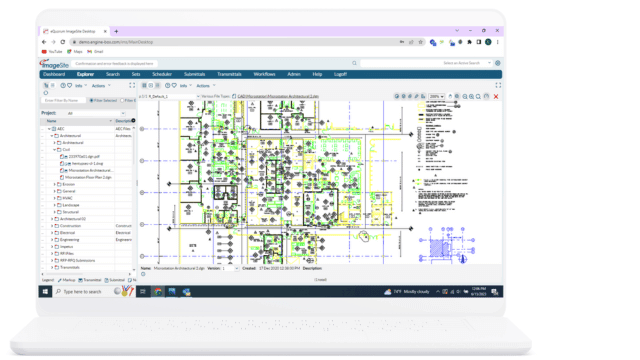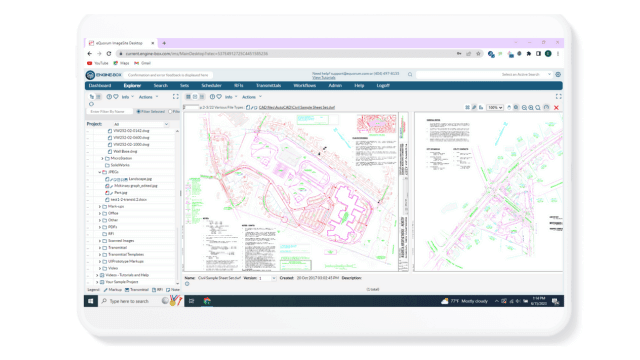3 Engineering Trends You Need To Know
3 Engineering Trends You Need To Know
In this article we explore 3 engineering trends that you should be aware of:
Artificial Intelligence (AI)
When talking about the latest trends in engineering, it may come as no surprise that Artificial Intelligence (AI) is coming to the forefront of modern engineering. After all, it’s likely to define the way people interact with computer systems in the coming decade. Artificial Intelligence is defined as the theory and development of computer systems able to perform tasks that normally require human intelligence, such as visual perception, speech recognition, decision-making, and translation between languages. It has applications in marketing, banking, finance, agriculture, healthcare, and even space exploration. In essence, there are virtually no limits to what artificial intelligence can accomplish.
The term Artificial Intelligence was coined in 1956 by American computer scientist John McCarthy at the Dartmouth Conference, although the first form of AI was seen as early as 1951. In this year, a machine known as Ferranti Mark 1 developed an algorithm to proficiently learn the game of checkers, which was followed by a General Problem Solver algorithm used to solve mathematical problems. Subsequently, John McCarthy created the LISP programming language, which later became important for machine learning.
For workflow and document management software AI is helping to accomplish many of the mundane tasks humans have had to do for years. This includes tagging and indexing files, finding files through heuristics and pattern searching, anticipating bottlenecks in workflows based on previous outcomes, and much more. Letting software make suggestions and recommendations based on deep learning patterns will ultimately improve the outcomes of workflows and speed up process accomplishment.
Further Reading: ImageSite – Driving Value and Innovation

The Discipline of Workflow Schedule Management
Business operations seem more chaotic than ever. The economic swings seem bigger; the labor pool is tighter, more diverse, and more geographically dispersed; the amount of information is enormous; and at the end of the day, management has just become harder. Trying to get your arms around all that’s going on and ensuring the organization is focused on getting the tasks done is now more complex and daunting. Add pandemics, supply chain disruptions, geopolitical uncertainty, and now even historical inflation.
What is a manager to do?
Automation
Automation is the use of largely automatic systems in a system of manufacturing or other production processes. Automation can be seen in both machinery and in software and is used to help organizations elevate efficiency and productivity, improve collaboration, and reduce workload for human laborers. System automation is a relatively new concept but has proven its value in a multitude of industries. Like AI and Big Data, automation is used to help companies explore new heights and improve the way they manage day-to-day business operations. The demand for automation software tools has skyrocketed in the last few years, mostly due to the need for cost savings, given the rapid growth in many firms.
In software (particularly the workflow and document management space) studies have shown that automation helps eliminate data entry errors and associated rework as well as reduce paper usage by up to 75%. For a large enterprise, these savings can amount to millions of dollars.
As engineering workflow software providers, we’ve seen first-hand what automation can do for your business, and as we continue to see new developments in this technology, we firmly expect rapid innovation to follow.
Further Reading: Workflow Automation – The “Now” of Engineering Project Management
Big Data
If you’re working in technology, healthcare, finance, or any other data-centric disciplines, then you’ve probably heard the term “big data,” as it has become a focal point for consumers and organizations both large and small. The term “big data” was conceived in 2005 by Roger Mougalas - the director of market research at O’Reilly Media. Magoulas runs a team responsible for building an open-source analysis infrastructure, providing analysis services to decision-makers at O’Reilly Media.
Big Data refers to a large set of data that is almost impossible to manage using traditional business intelligence tools. Although the fundamental concept of Big Data has been around for decades, it hasn’t seen the spotlight until the early 21st century. This is primarily due to recent advancements in modern computing and computing resources now available in affordable PCs and networked infrastructure.
Companies are using big data to solve big problems. Influencers, academicians, and collaborators all agree that big data is changing the modern business landscape as we know it. It has been used in an extensive range of industry applications, including but not limited to, marketing, finance, engineering, and healthcare.
For a long time, engineering has relied on complex solution systems for structure design and analysis using sub-optimizing algorithms, such as finite element analysis. Using “big data” systems allows for a more exact solution, ironically using fewer complex algorithms but with the benefit of millions, if not billions of situational iterations.
Further Reading: Using Data to Improve Operational Efficiency
Related Links:
Additional EDMS Features
Our EDMS solutions
ImageSite and EngineBox are eQuorum’s robust workflow and document management solutions, created to help workers manage their essential workflows while maintaining complete control over their engineering files and documents. Not only do they provide a secure collaboration site for workers, but they also help organizations manage document distribution with third parties like vendors, contractors, and customers. Both systems are offered at a competitive price, enabling organizations to get a quick return on their investment by providing the features and functionality needed to help organizations improve efficiency, productivity, and collaboration. Companies can choose from concurrent user subscriptions or named user subscriptions, ensuring organizations have subscription options that make sense for their business.

ImageSite®
Our single source engineering workflow and document management system. Built in HTML5 so there is no software to deploy to client computers or mobile apps to download. Offered as an On-premise or Private Cloud system.
EngineBox™
EngineBox is a cloud based workflow and document management version of ImageSite that resides outside the corporate network.
Our EDMS solutions
ImageSite and EngineBox are eQuorum’s robust workflow and document management solutions, created to help workers manage their essential workflows while maintaining complete control over their engineering files and documents. Not only do they provide a secure collaboration site for workers, but they also help organizations manage document distribution with third parties like vendors, contractors, and customers. Both systems are offered at a competitive price, enabling organizations to get a quick return on their investment by providing the features and functionality needed to help organizations improve efficiency, productivity, and collaboration. Companies can choose from concurrent user subscriptions or named user subscriptions, ensuring organizations have subscription options that make sense for their business.

EngineBox™
EngineBox is a cloud based workflow and document management version of ImageSite that resides outside the corporate network.
The eQuorum Customer Promise
In 2005, eQuorum developed the first all browser-based EDMS. The system, although for on-premise use, was still created to remove client software and JAVA from user computers and allow users to have a single viewer based on the simple navigation functionality of browsers. Today, eQuorum provides that same application in a private Cloud or a SaaS Cloud option. We can do this because we are, and have always been, browser-based, understanding the enhanced speed, security, and usability of this technology.
With the abundance of document management systems on the market today, there’s no doubt that choosing the right Cloud document management software can be a difficult decision. eQuorum is here to provide a comprehensive, powerful, and most importantly – affordable Cloud document management solution. We believe in providing real value to our customers by eliminating unnecessary costs, providing industry-leading functionality, and equipping your team with the right tools using cutting edge technology to bring your products to market faster.
eQuorum®
We specialize in engineering workflow and document management. Our comprehensive, yet easy-to-use software provides the solution to manage data from design to manufacturing and production, to sales, support and administration.